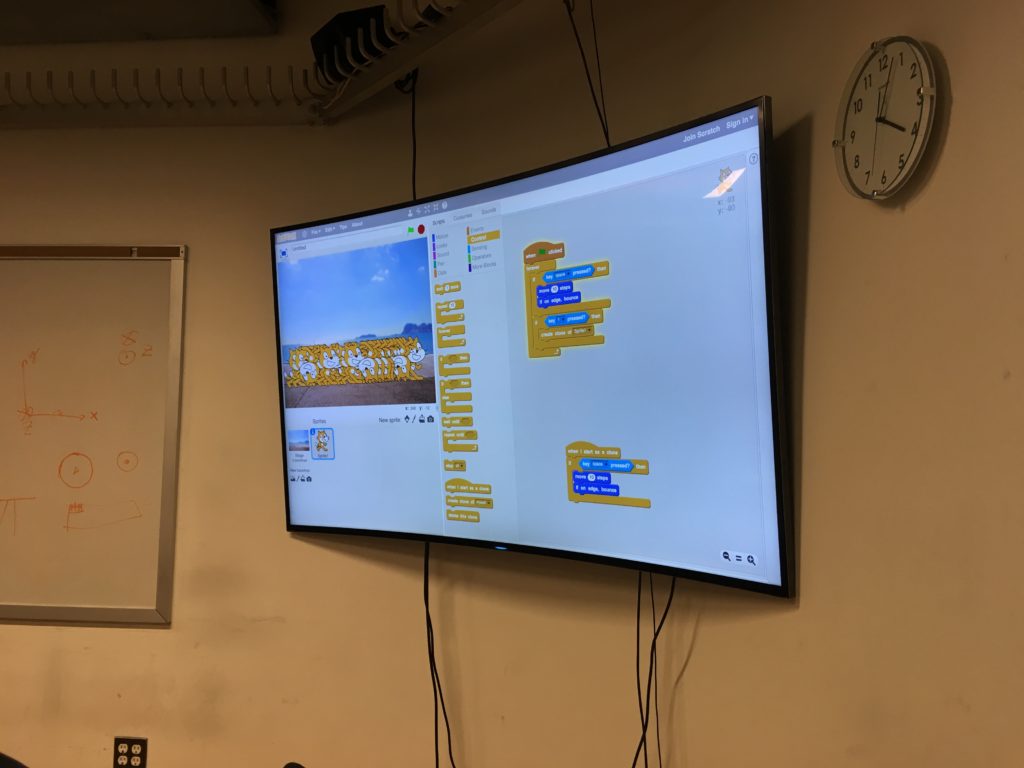I recently taught an hour long workshop on Scratch, a visual programming language built for fostering technical literacy in children. It’s a wonderful tool for teaching computational thinking and programming, one that I thought other ITP students would enjoy learning about, especially in the context of teaching.
The full syllabus for the workshop can be found here.
Our group was small and intimate, with three people other than me. One had found my and my classmate Beverly’s workshops on Eventbrite and decided to attend (Beverly’s was the hour before mine). The other two were my classmates (including Beverly). We started with a brief introduction to Scratch and a quick icebreaker in which each person talked about their interest in teaching.

I wanted to bulk of the workshop to be spent building, so I quickly covered the Scratch platform and how to build interactive experiences. We covered the canvas, toolbox, and code sandbox; backdrops and sprites (objects in a projects); and how to use programming blocks to move objects, play sounds, and respond to inputs from a computer. Here’s an outline of everything we covered.

We spent the next 20 minutes building a simple game or story in Scratch. I was available to help answer any questions, but the platform is very intuitive and straightforward –it better be, considering the target audience– so everyone was self directed for the most part. After 20 minutes we went around the group and shared our projects and what blocks we used to make them.

We concluded the workshop with an overview of other block coding platforms and a discussion about how Sketch can be used in the classroom and it’s potential drawbacks. Overall the group saw a lot of potential for Scratch to help kids learn how to program, especially in the context of creative coding, since Scratch is almost like a block-coding version of processing.
Two major drawbacks were cited:
- Scratch comes across as mostly for very young kids.
- The fact that one can’t see the text-code behind the blocks puts a ceiling on how far into programming one can go.
- The aesthetics seem very early 2000s, like many Flash applications that today seem retro. This could turn away young adults who are used to the quality of graphics one get’s from a Playstation.

All-in-all, despite low attendance, everyone seemed to enjoy the workshop. We learned a new teaching tool and built original projects to start putting that tool into practice. Now I hope the workshop participants will continue working with it!
If I am to host one of these again, I will do two things differently:
- Recruit people from outside of ITP.
- Present more on example lesson plans, rather than how to use the platform. It really is so easy that participants can figure it out on their own while the presenter is talking.
